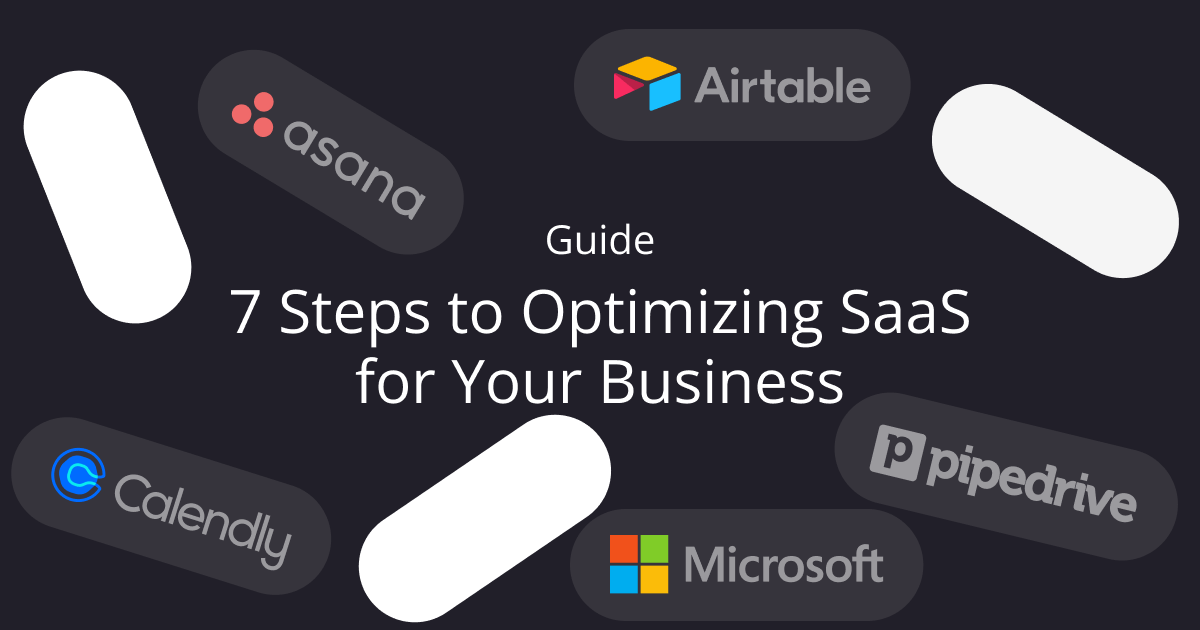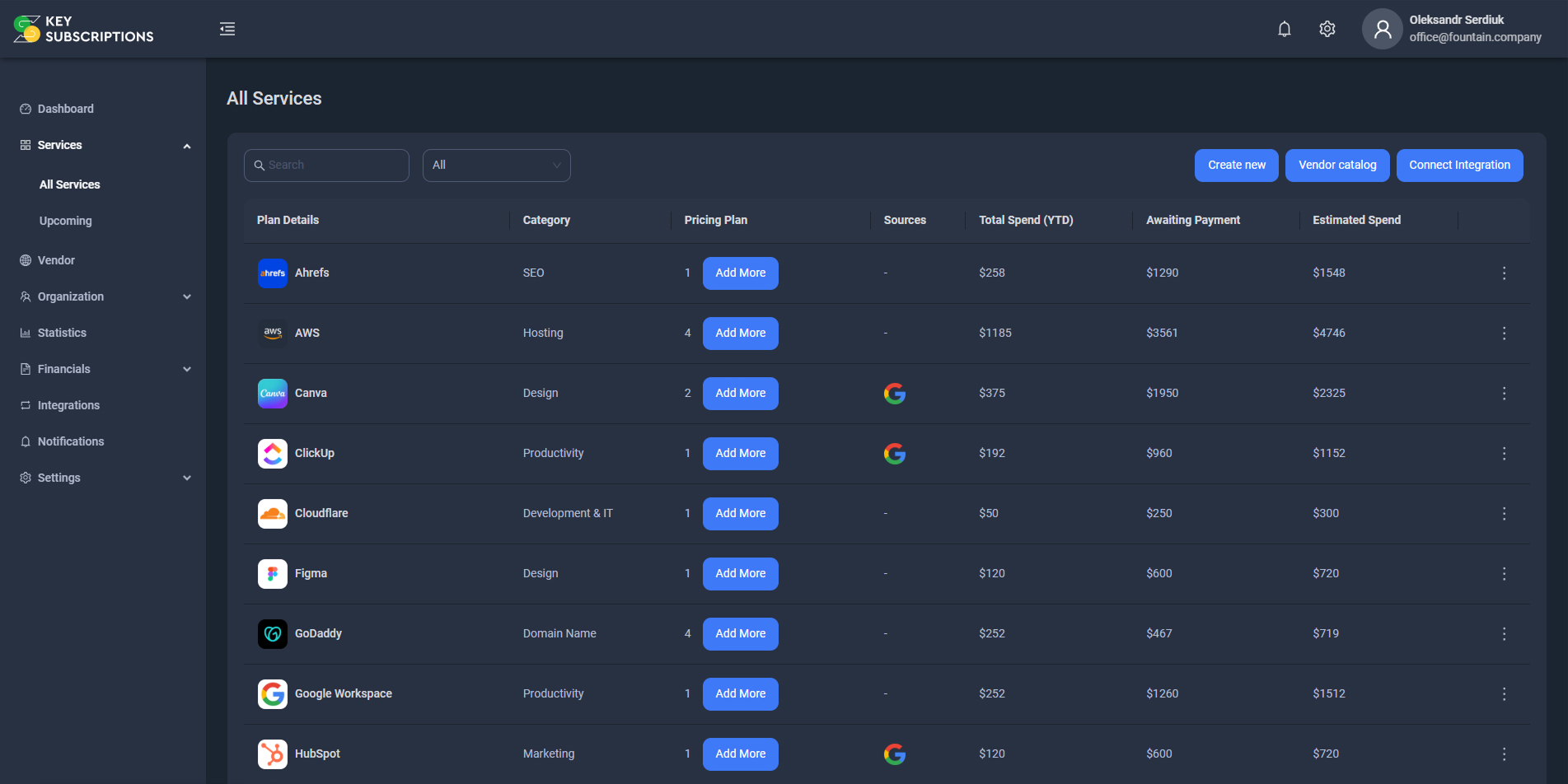
Guide
7 Steps to Optimizing SaaS for Your Business
In today’s business environment, where every dollar matters, optimizing SaaS subscriptions has become essential for reducing costs, improving productivity, and achieving financial transparency.
Many companies face challenges such as uncontrolled subscription spending, duplicate services, or inefficient resource use. Our guide, “7 Steps to Optimizing SaaS for Your Business,” will help you tackle these issues and make your business more efficient.
Step 1
Conduct an Audit of All Subscriptions
💰
Savings
- Up to 25% of key subscriptions can help reduce SaaS expenses.
- Approximately 30% of SaaS subscriptions remain unused in companies.
- Identify duplicate payments to eliminate unnecessary costs.
- Cost control: Notifications prevent unwanted automatic renewals.
The first and most crucial step is to analyze all active SaaS services in your company.
✅
What to Do
- Gather information about all active subscriptions (service name, cost, billing frequency, and owner).
- Identify duplicate or unused services.
🎯
Outcome
You will gain a complete picture of your SaaS subscriptions.
Step 2
Categorize Subscriptions by Importance
Not all services are equally important to your business. Determine which are critical and which are supplementary.
➡️
How to Proceed
- Divide services into categories: essential, useful, and unnecessary.
- Identify which services provide the most value to your team.
🎯
Outcome
Easily prioritize which subscriptions to optimize.
Step 3
Automate Subscription Management
💰
Savings
- Automated systems can reduce SaaS costs by up to 25% in the first year.
- Timely reminders help avoid missed payments.
- Expense forecasting allows you to anticipate upcoming costs.
Automation helps you avoid the hassle of manual payment tracking, reminders, and analysis.
📝
Recommended Actions
- Use specialized platforms like Key Subscriptions to manage SaaS.
- Set up automatic reminders for upcoming payments.
🎯
Outcome
Minimize human error and save time.
Step 4
Cut Unnecessary Costs
Many companies pay for services they no longer use or for which cheaper alternatives exist.
✅
What to Do
- Cancel unused services.
- Review pricing plans and switch to cheaper options if available.
- Negotiate corporate discounts with providers.
🎯
Outcome
Reduce overall SaaS expenses.
Get free access to the SaaS management platform
Step 5
Assign Ownership of Subscriptions
Every subscription should have a designated owner or team responsible for monitoring its usage
🔧
Actions
- Assign a person responsible for each service in your company.
- Hold regular meetings to analyze subscription usage effectiveness.
🎯
Outcome
Increased accountability and control.
Step 6
Analyze Subscription Effectiveness
💡
Financial Transparency
- Centralized management provides easy access to subscription statuses.
- Real-time updates ensure accurate cost information.
- Create detailed financial reports for analysis.
- According to PwC, transparent companies make decisions 20% faster.
Regular analysis helps evaluate how effectively subscriptions are being used.
🧐
How to Analyze
- Review usage reports for all services.
- Compare costs with the value received (ROI).
🎯
Outcome
Identify services that do not deliver expected results.
Step 7
Leverage Analytics for Forecasting
⏱️
Productivity
- Automating workflows boosts productivity by 25–30%, according to McKinsey.
- Ensure your team has access to key information.
- Use forecasting to avoid unnecessary costs and optimize your budget.
Modern tools can help you predict future expenses and avoid financial surprises.
🔧
Actions
- Implement forecasting solutions, such as Key Subscriptions’ analytics modules.
- Regularly analyze spending trends in your company.
🎯
Outcome
Predict expenses and plan budgets effectively.
Conclusion
Optimizing SaaS is not just about reducing costs; it’s about better managing your company’s resources. Implementing these 7 steps will help you achieve financial transparency, save money, and increase your business productivity.
Ready to start controlling your subscription business?
Begin your free trial today.
Begin your free trial today.
- Subscription Tracker
- Optimize costs
- Automated reports
